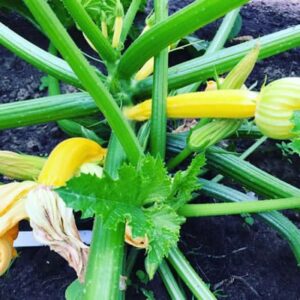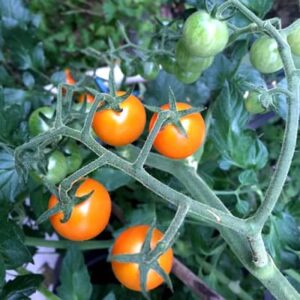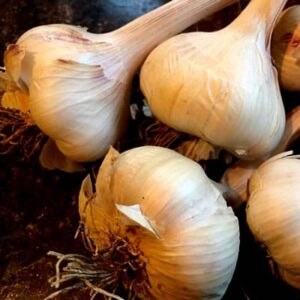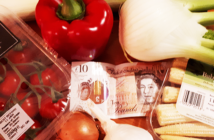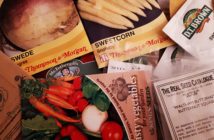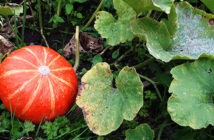July and August are my two favourite months at the allotment, the greenery is really kicking in and starting to make the hard work seem worthwhile. Pumpkins are beginning to tease me by setting fruit and at the same time a multitude of plants are providing an abundance of take-home produce.
Here are the main tasks I have in my mind during July:
Growing tasks
Squash and Pumpkins
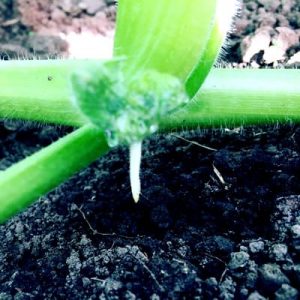 Bury vines at the nodes, this helps to anchor them and to encourage additional root systems to give you bigger and more plentiful fruiting.
Bury vines at the nodes, this helps to anchor them and to encourage additional root systems to give you bigger and more plentiful fruiting.- Feed plants with nettle & comfrey liquid feed once per week (diluted into a watering can). Water at the base and rinse the plant base with plain water afterwards (to reduce any high NPK burn).
- Give a foliar feed (spray the leaves) with liquid seaweed in between two nettle & comfrey feeds. Don’t choose a hot day – you don’t want leaf scorch.
- Manually pollinate any female flowers each morning to guarantee the seed line. Cover flowers before and afterwards to keep out pollinators bring contaminating pollen (a paper bag and peg do the job).
Courgettes
- Stay on top of courgette harvesting, courgettes taste best at around 4-5 inches in length. The more your harvest the more you’ll receive.
- Again feed plants with nettle & comfrey liquid feed once per week (diluted into a watering can).
Tomatoes
- Keep tomatoes well watered in the greenhouse, do not water the leaves, only the base (damp tomatoes are more susceptible to blight)
- If possible stand potted tomatoes in a tray of water (or a plastic pond you got from freecycle…).
- Feed with Tomorite once a week (helps to reduce blossom end rot and encourages fruit growth).
- Pinch out the top of tall plants if they have lots of flower trusses on, get the energy going into fruiting now.
- You know you can feed dahlias with Tomorite too?I usually do it at the same time as the tomatoes.
Garlic
- Autumn planted garlic should have been lifted in June and should be cured in a dark dry place by now, clean it up and hang it in the kitchen.
- Harvest Courgettes
- Feed Tomatoes
- Cured Garlic
Runner Beans
- Water once a week if it doesn’t rain and water well. Otherwise leave beans alone to do their thing.
- Pick any early runner beans before the seed pods begin to bulge (or the skins toughen and get stringy).
Like courgettes, pick them regularly to keep the beans coming.
Sweetcorn
- Keep watered on dry soil and add more mulch. Give soil the occasional press with your foot around the roots to keep the soil firm. You have the option to bulk up soil around the stem base with some compost to protect any exposed roots from hot sun (and for feeding benefits).
Potatoes
- Lift some potato plants, if the results are positive start enjoying the fruits of your labour!
- Keep maincrop plants well watered, dry conditions reduce yield and potato size.
- Sow potatoes now for Christmas crops!
Onions
- Some of my onions are reaching a decent size, which means any time MrsGrow asks for one now I can pull one up. However onions are definitely ready to harvest when the leaf tops fall over.
- I water my onions sparingly (but daily in hot spells to reduce bolting).
Cucumbers
- Keep well watered and pollinate flowers by hand if cucumbers are in the greenhouse (just to guarantee yourself something to harvest, I find pollinators not 100% reliable on cucumbers)
Plot-keeping tasks
The Shed
- If your shed is like mine it’s in need of a clear out, a sunny day is just the time to get to grips with it! Throw out those old broken plastic pots you lazily discarded while rushing back to your family, pick up the twine offcuts, tidy that tent peg away so you can find it when you need it. Why is there still an empty box of chicken manure pellets sitting in the corner and six plastic Evian bottles?
- Paint the shed – a hot day in July is the perfect day to break out the green Cuprinol.
Weeds and paths
- The weeds are back! Time to trim those attempting plot invasion from the perimeter before they go to seed and infect beds. A single dock can produce 60,000 seeds! Use a hoe in planting beds to keep seeds down taking care to avoid vulnerable crop roots (don’t get to close, use your hands for those).
- Reapply wood-chip to paths to help keep weeds from spreading and to keep the plot looking clean.
Fencing
- I ripped out some ancient chicken wire fencing a couple of months ago because the weeds had taken it for themselves. I now need to replace it to dissuade would-be pumpkin thieves, badgers, deer and rabbits from ruining all my hard work. And dogs, I’ve noticed a couple of dogs running around my plot recently while their owner / plot holder wasn’t paying attention.
Manure
- The summer is a good time to start building up a new manure pile, in six months time it will be Spring and you’ll be wanting lots of the lovely black stuff for your 2018 allotment endeavours. Fresh manure shouldn’t be put onto beds, you need it to rot down so now’s the time to collect it well in advance.


